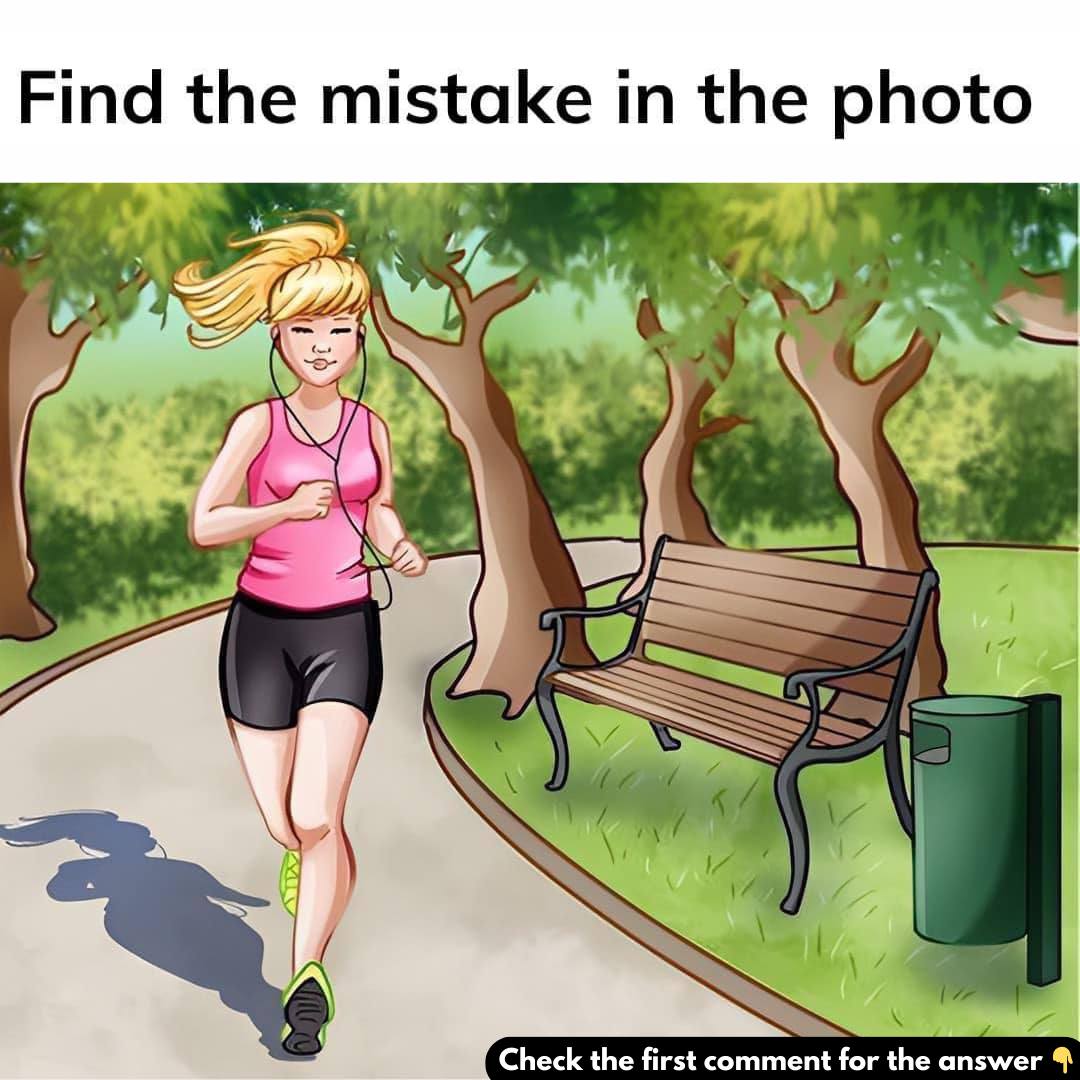Take a moment to really study the picture of the girl running. At first glance, it seems like a perfectly normal scene—a bright, peaceful park with a woman jogging along a path, the sun casting its warm, golden glow, trees lining the background, and a bench sitting quietly near a trash bin. Everything appears just as it should be, right? But if you look a little closer, you’ll realize there’s something off about this seemingly ordinary image.

Hidden in plain sight is a mistake that most people overlook on their first try. That’s the magic and frustration of puzzles like this—they challenge the way we see and interpret the world around us. Optical illusions and visual puzzles trick our minds because we rely on assumptions and visual shortcuts to quickly make sense of what we see. Our brains are incredibly fast and efficient, but sometimes that efficiency works against us. When we see a familiar setting, like a park or someone jogging, we tend to accept the scene without overanalyzing it. We focus on the big picture instead of picking apart each detail, and in doing so, we often miss the small things that make all the difference. In this case, you probably noticed the runner first—after all, she’s the main subject of the image.
She’s mid-stride, clearly enjoying her workout, and her shadow stretches behind her, sharply defined by the sunlight. Everything checks out so far. But here’s the twist: while she has a shadow, none of the other objects in the picture do. The bench? No shadow. The trees? Shadowless. The trash bin? Also missing a shadow. That, right there, is the error. In a real-world scene illuminated by sunlight, every object—no matter how big or small—would cast a shadow. Light behaves predictably, and shadows are a natural result of solid objects blocking light. So when only the runner has a shadow and everything else doesn’t, the image breaks the rules of physics and reality. This inconsistency is what makes the puzzle so clever. It plays into our expectations about how the world works and uses those assumptions to distract us from what’s missing. It’s easy to get caught up in the central figure and forget to inspect the background elements, especially when they seem so mundane. But it’s exactly those “unimportant” parts that hide the answer.
People miss this kind of mistake all the time, not because they’re not observant, but because our brains are wired to filter out what we believe to be irrelevant. The jogger captures our attention, and our brains assume the rest of the scene is just background noise. It doesn’t occur to us to question whether the trees or the bench should have shadows. That’s why puzzles like this are so beneficial—they challenge us to slow down, question what we see, and really pay attention to the finer details. These visual challenges aren’t just fun distractions; they also train our brains to be more analytical and precise. Spot-the-difference games and optical illusions improve observation skills, boost critical thinking, and help develop patience and mental discipline. They make us better at noticing small changes in our everyday environments, and they encourage a more mindful way of seeing the world. So, how did you do? Were you able to catch the missing shadows right away, or did it take a few moments of scanning the image before the inconsistency jumped out at you? Maybe you noticed another detail that didn’t quite make sense. Either way, these puzzles are a great way to test your perception and see how your brain processes visual information. And if you enjoyed this challenge, there are plenty more where that came from. The more you practice with these kinds of puzzles, the faster and sharper your observational skills become. Next time, you might catch the mistake in seconds. In the end, the lesson here is simple but powerful: the smallest details often hide the biggest clues. When you take the time to really look, to question the things that seem obvious, you open yourself up to a whole new level of awareness. So keep exploring, stay curious, and always remember that sometimes the truth is hiding in the shadows—or in this case, in the lack of them.





